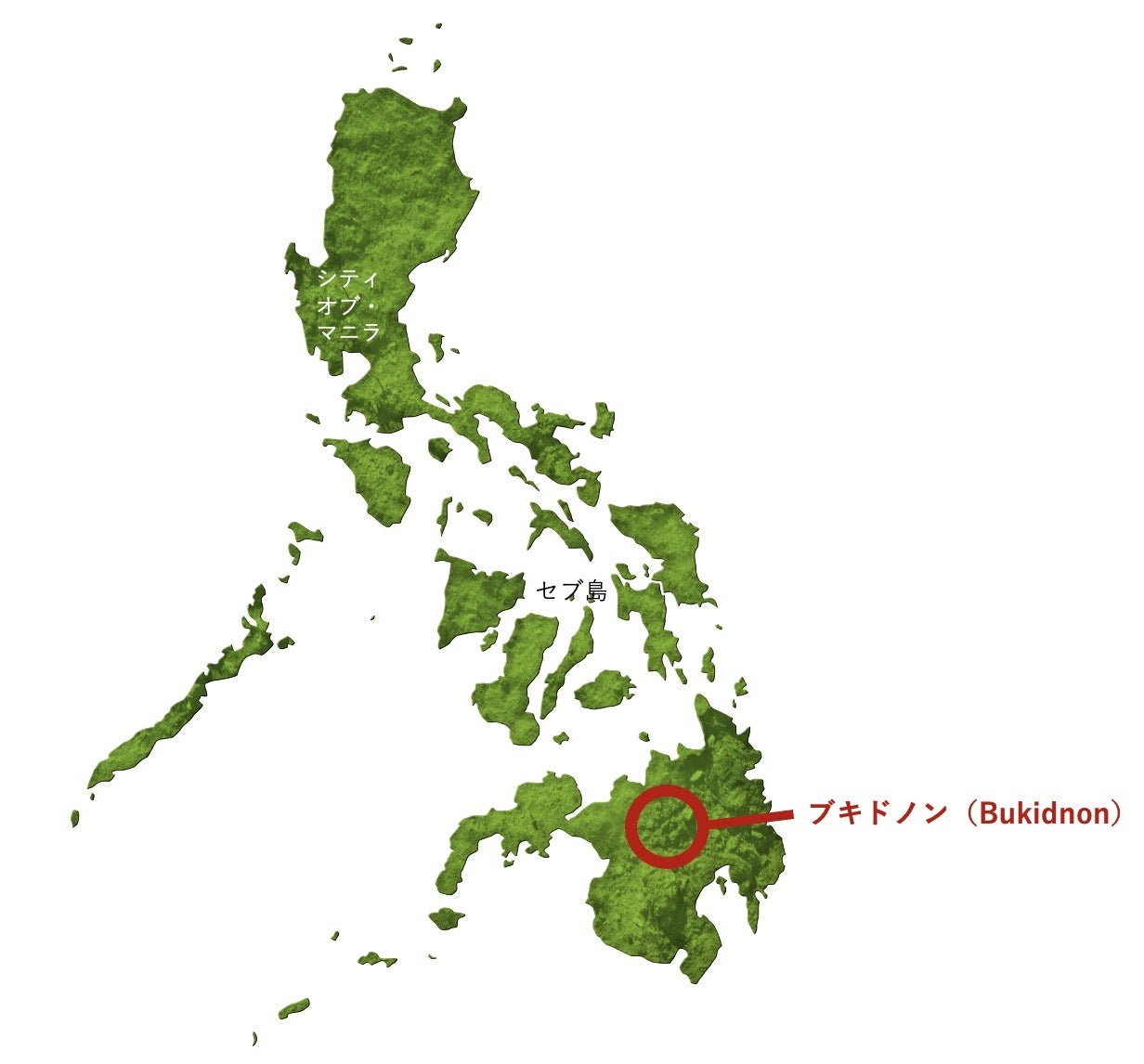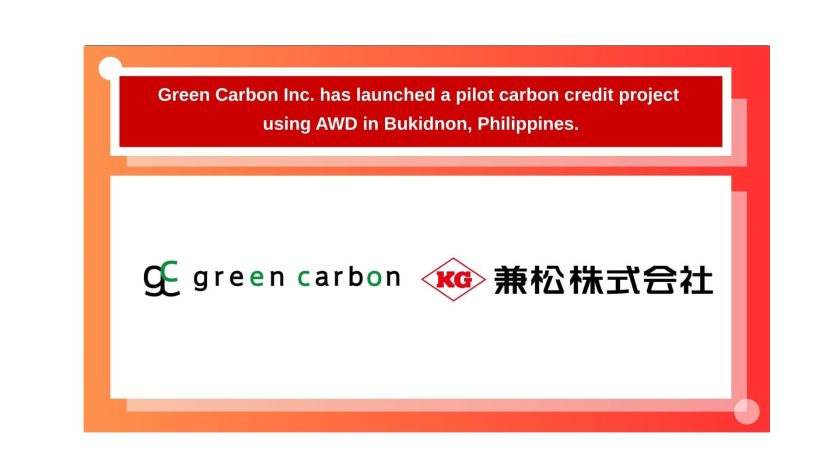The first initiative in the Northern Mindanao region.
The goal is to expand the project size to 5,000 hectares over three years, utilizing the JCM methodology, and to 30,000 hectares over ten years.
Green Carbon Inc. (CEO: Jun Okita, hereinafter “Green Carbon”), a company developing and selling nature-based carbon credits, has partnered with KANEMATSU CORPORATION (Representative Director and President: Yoshiya Miyabe) and Central Mindanao University to launch a carbon credit creation project utilizing the AWD (Alternate Wetting and Drying) (*1) method, based on the JCM (*2) methodology, in Maramag, Bukidnon Province, within the Northern Mindanao region of the Philippines.
This pilot project will begin in the wet season of 2025, targeting approximately 100 hectares of paddy fields. The first year will focus on technical verification for commercialization. The project is planned to be implemented over a total of three years.
〇For inquiries regarding this press release and for further details, please contact:
〇To download Green Carbon Co., Ltd.’s company profile, please visit:
◆ Background of the Partnership
Under the vision of “Save the earth with the power of nature.,” Green Carbon develops a business that provides end-to-end support for the creation, registration, and sale of carbon credits. Meanwhile, KANEMATSU CORPORATION, in its Medium-Term Management Plan “integration 1.1,” positions “Agriculture and Food Green Transformation (GX)” as a key area and is advancing the practice of Carbon Insetting (*3) using resources such as biochar and methane reduction materials for cattle. Kanematsu also has 10 successful JCM projects in the energy sector in countries including the Philippines and Thailand, thereby expanding its contribution to a decarbonized society.
The two companies signed a collaboration agreement in May 2024 aimed at suppressing “paddy field methane” emissions and promoting the spread of environmentally friendly rice, advancing initiatives both domestically and in Vietnam. Green Carbon aims to develop this project beyond a mere technical demonstration into a model case that enhances the sustainability of regional agriculture. Based on the results of the pilot project, the company plans to expand to 5,000 hectares over three years and 30,000 hectares over ten years.
While promoting greenhouse gas emission reduction in the agricultural sector, the project also aims to reduce water usage costs for farmers, improve agricultural productivity for local communities, and ensure a stable supply of credits for the international community.
◆Regional Characteristics
Bukidnon Province is a plateau located in the Northern Mindanao region of the Philippines, characterized by a cool tropical monsoon climate. The weather remains mild throughout the year, with a wet season from June to October and a dry season from November to April.
The region is relatively less affected by direct typhoons, which contributes to stable agricultural production. Of the province’s total area, approximately 185,000 hectares, or about 45% of the entire province, is utilized for agriculture, positioning it as one of the Philippines’ leading agricultural provinces. The total area of paddy fields amounts to roughly 40,799 hectares, with approximately 90% of the harvest coming from irrigated fields.
Major rice-growing areas include the fertile rice-producing zones in the Pulangi River basin, such as the project target area of Maramag (approx. 7,000 ha: 5,000 irrigated / 2,000 rain-fed), as well as Valencia City, Quezon, Don Carlos, and Kibawe. These regions are excellent in securing water resources and offer significant potential for future project expansion.
<About Central Mindanao University>
Central Mindanao University is a state university headquartered in Musuan, Maramag, Bukidnon Province, Philippines. Established in 1910 as the Mailag Industrial School, it was later reorganized to become the Central Mindanao University. It is a comprehensive university with particular strengths in fields such as Agriculture, Forestry, Veterinary Medicine, and Biology, and it holds a high academic reputation, having been designated as a Center of Excellence/Center of Development by CHEd. Furthermore, through research centers like CEBREM, it operates on a tripartite mission of research, education, and community service. CMU implements practical education and collaborative projects that contribute to biodiversity conservation and sustainable agriculture.

◆ Future Outlook
Green Carbon will conduct commercialization verification aimed at full-scale project implementation in 2026. Based on the knowledge gained through this pilot project, Green Carbon is looking at expanding the target area within Bukidnon Province, as well as extending the project to other regions in the Philippines. Specifically, the company plans to scientifically demonstrate the greenhouse gas reduction effect achieved through the dissemination of AWD technology and to communicate the effectiveness of climate change measures in the agricultural sector both domestically and internationally.
Furthermore, by strengthening cooperation with local farmers, local governments, and academic institutions, the project aims to go beyond mere credit creation to promote the establishment of a sustainable agricultural model. This approach will balance regional economic development with environmental conservation and contribute to the stable supply of credits to the international carbon credit market.
Looking ahead, Green Carbon also envisions expansion into other Southeast Asian countries beyond the Philippines. By contributing to carbon credit creation across Asia, the company aims to play a part in international efforts toward climate change mitigation.
(※1) :Alternate Wetting and Drying (AWD):
AWD is a water management practice in which rice paddies are alternately flooded and allowed to dry for several days based on water level monitoring. Compared to continuous flooding, AWD reduces water usage and contributes to water resource conservation.
(※2) Joint Crediting Mechanism (JCM)
A system in which Japan and a partner country cooperate to reduce or absorb greenhouse gases, sharing the quantified reductions or absorptions between both countries. In Japan, the quantified reductions/absorptions can be utilized as carbon credits. The Japanese government aims to secure approximately 100 million t-CO2 cumulatively by FY2030 and approximately 200 million t-CO2 by FY2040.
(※3):Carbon Insetting
A mechanism to incorporate GHG emission reductions or removals achieved within the same supply chain. For example, it includes the procurement and retirement of carbon credits generated by producers, or the utilization of these reductions for product emission reductions. It is the antonym of “carbon offsetting,” which involves incorporating environmental values created outside the supply chain.
◆ Green Carbon Inc.
Representative: Jun Okita, CEO
Head Office: PREX North 9F, 2-3-2 Kojimachi, Chiyoda-ku, Tokyo, Japan
Established: December 2019
Business Activities: Development and sales of carbon credits, agriculture-related projects, environmental projects, other related businesses, and ESG consulting
Website: https://green-carbon.co.jp/en/
◆ About Green Carbon
Guided by the vision of “Harnessing the power of life to save the Earth,” Green Carbon develops and supports projects that generate, register, and sell nature-based carbon credits both in Japan and abroad. The company is also engaged in agriculture-related businesses, R&D initiatives, and ESG consulting.
Its business activities span Japan, Southeast Asia, Australia, and South America, creating credits from rice paddies, biochar, forest conservation, carbon farming, mangrove planting, and cattle methane reduction. In Japan, Green Carbon obtained certification in FY2023 for the country’s first and one of the largest-scale rice paddy J-Credit projects (approx. 6,220 t). In FY2024, the company plans to expand this initiative to around 40,000 ha (approx. 80,000 t).
Green Carbon also provides “Agreen,” a one-stop platform service that streamlines the entire process of credit registration, application, and sales. By simplifying procedures and documentation, the service reduces the administrative burden on credit creators.

